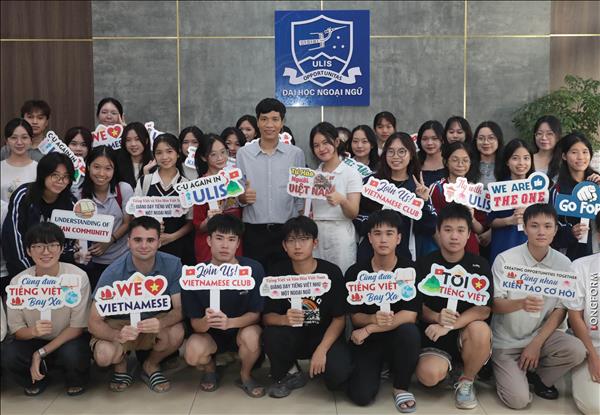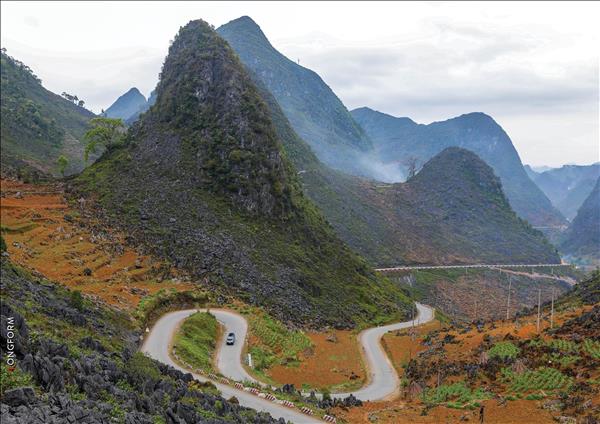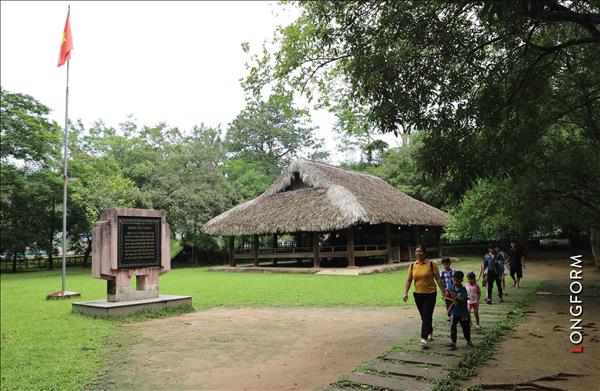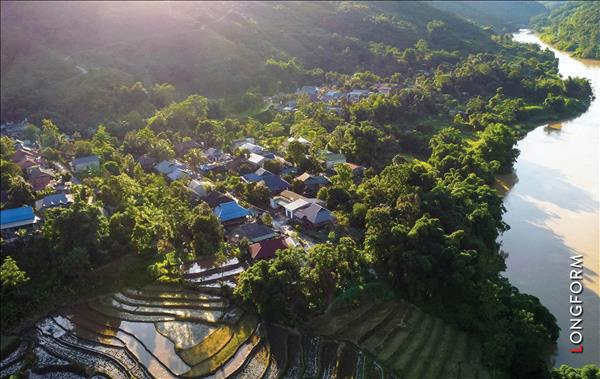In feudal times, Tet specialties were delicious items taken from the forests or the sea, such as tortoises, wild duck, salangane nests and chicken which were served to the king, mandarins or rich families. For ordinary people, it was usually pork, square glutinous rice cakes (called Banh chung), salted onions, firecrackers, or bamboo poles.
With the development of society, those specialties are more available for both the rich and poor. The popular ones include special chickens raised by the villagers of Dong Tao commune, pomelos from Dien, peach blossoms from Nhat Tan and bananas from Dai Hoang (in the north); Thanh Tien paper flowers, paintings made in the Sinh commune and food made in the form of the royal imperial city of Hue (in the central region); apricot flowers, Tan Hong pomelos and cylindrical glutinous rice cakes (in the south). Well-off families can purchase expensive and delicious food and items used to be served to the royal family for their Tet holidays, such as salangane nests, big fish or Dong Tao chickens.
Vietnamese people often cook Tet food that is unique to their native place, which are eye-catching, delicious and nutritious. For example, in the Red River Delta, there are craft villages, each famous for its own Tet specialties, such as Uoc Le commune, where villagers make square sticky rice cakes and pork pies. Xuan Dinh commune is famous for its candies and jams, and Dai Hoang commune (Nam Dinh province) is well known for its delicious braised fish.
| The vietnamese people set a five fruit tray to pray for health, luck and prosperity in the lunar new year. |
Vietnamese people often cook Tet food that is unique to their native place, which are eye-catching, delicious and nutritious. For example, in the Red River Delta, there are craft villages, each famous for its own Tet specialties, such as Uoc Le commune, where villagers make square sticky rice cakes and pork pies. Xuan Dinh commune is famous for its candies and jams, and Dai Hoang commune (Nam Dinh province) is well known for its delicious braised fish.
 Nhat Tan is famous for growing beach blossoms which are indispensable on Tet. Photo: Nguyen Thang/VNP 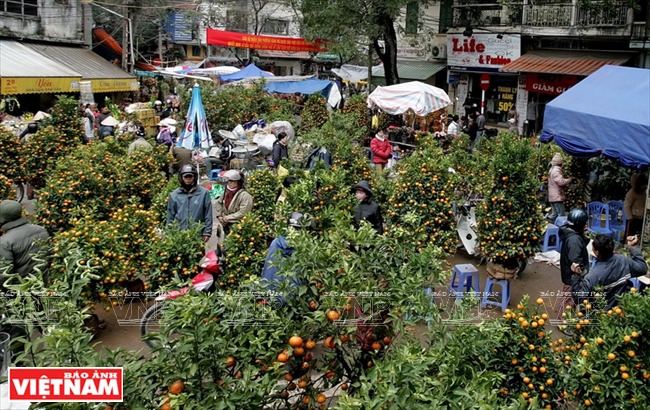 Peach flowers and kumquat trees are sold at the flower market on Hang Luoc street, Hanoi. Photo: VNP’s file 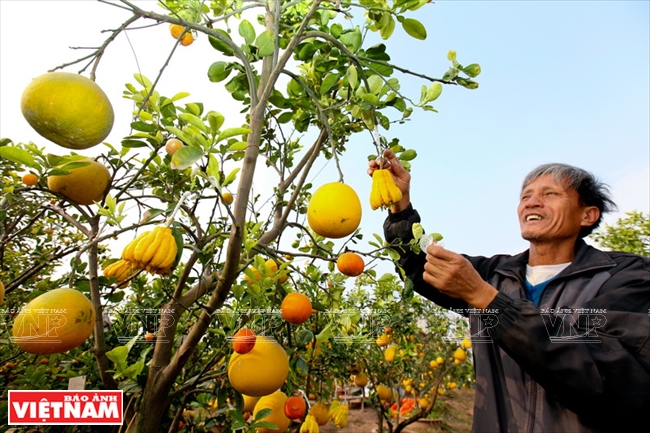 Le Duc Giap, a farmer in Thanh Oai district, Hanoi has grafted successfully five fruit trees of pomelos, oranges, mandarins, kumquats and Buddha’s hands to meet the demand of customers. Photo: Viet Cuong/VNP 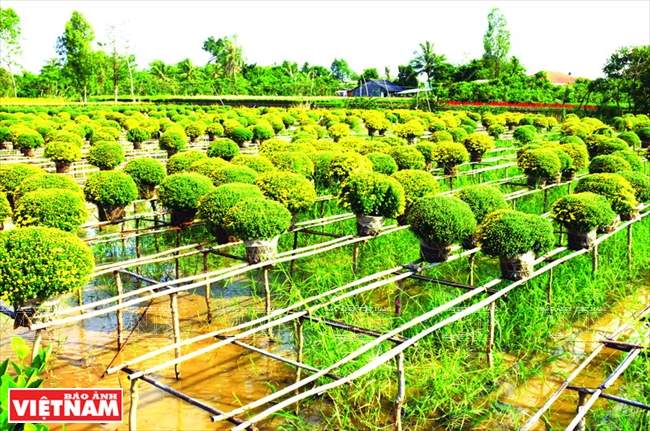 The village of tan Quy Dong in Sa Dec, Dong Thap is the largest flower growing area in the South. During the days before Tet, the village is look colourful with different kinds of flowers. Photo: Nguyen Thang/VNP  Yellow apricot flowers, watermelon and kumquats are favourite specialties of Vietnamese people during Tet. Photo: Nguyen Luan & Trinh Bo/VNP 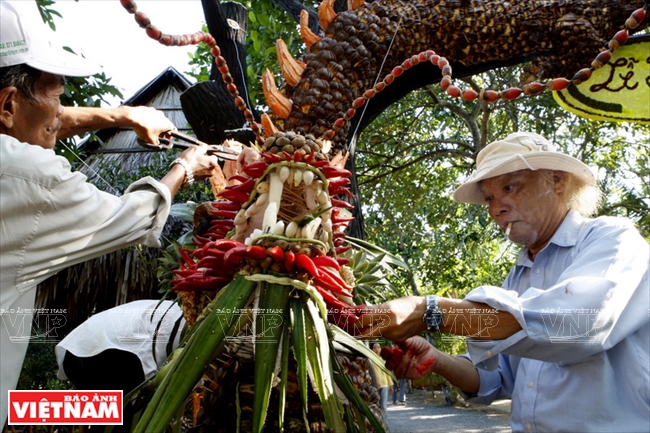 Southern artisans make a dragon from fruits to welcome Tet. Photo: Minh Quoc/VNP |
| The Lunar New Year, called Tet by the Vietnamese people, is the most important holiday of the year in Vietnam. Tet often lasts for the first three days of lunar January, an occasion for family re-unions and family members to remember their ancestors, enjoy time together, and exchange best wishes and good luck throughout the year. |
In the South, on the food tray for worshipping the ancestors, or those to treat family members and friends, there is always delicious food such as cylindrical sticky rice cakes (called Banh tet), braised pork, pork pies, roasted pork and sausage. The food will be offered to the ancestors first, then served to the family during Tet.
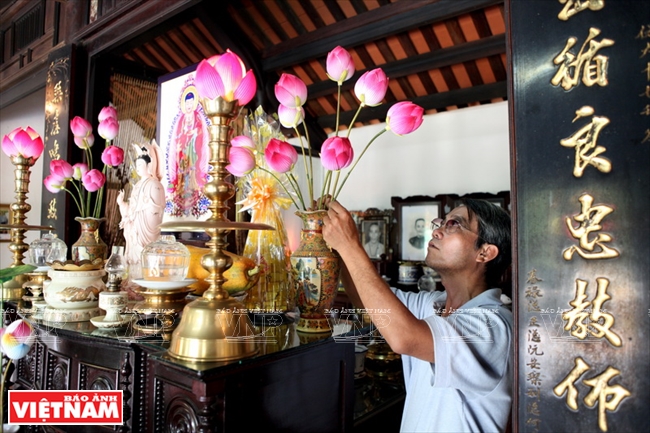 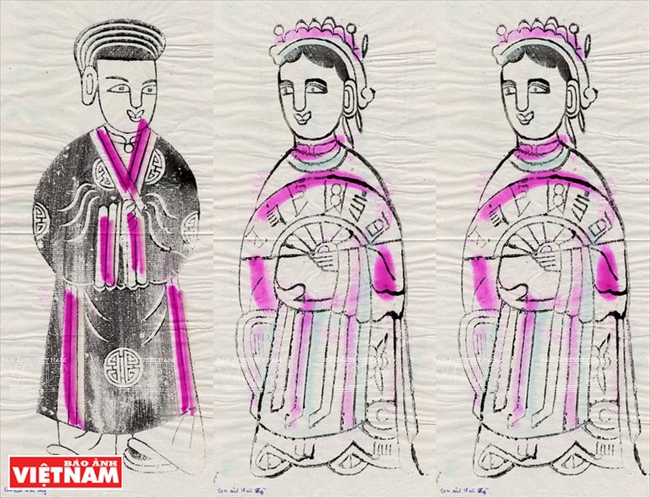 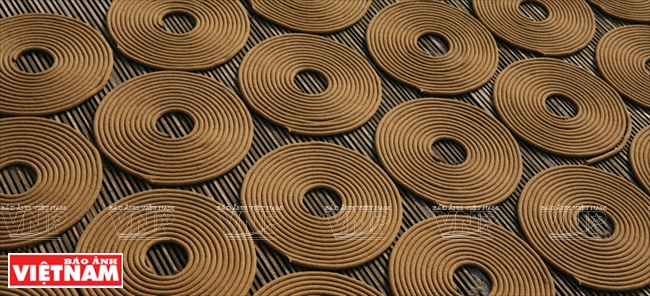 During Tet, paintings of Sing village, Thanh Tien paper flowers and incense-coils are used to decorate the altar. Photo: Vinh Hung, Thanh Giang & Ngo Du/VNP Writting calligraphy letters on spring days. Photo: Cong Dat 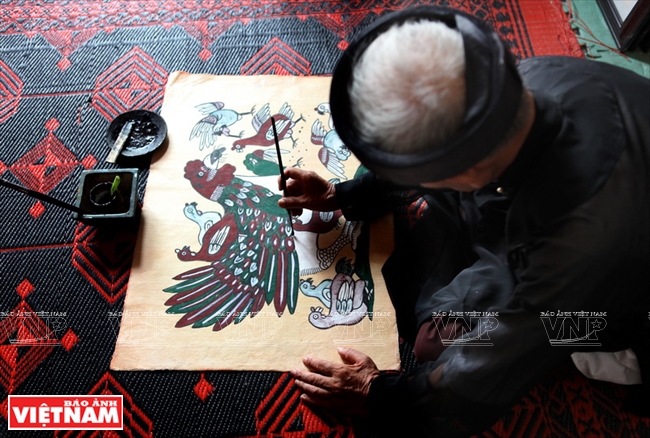 Artisan Nguyen Dang Che in Dong Ho village, Thuan Thanh district, Bac Ninh province gives final touches to a painting of chickens. Dong Ho folk paintings are much sought after by people in the north during Tet. Photo: Trinh Bo/VNP |
| During days before Tet the vietnamese people often prepare special cakes and jams such as sugar coated lotus seeds, sugar coated ginger and coconut to offer to their ancestors and treat guests. |
Besides cooked food, Tet specialties also include fruits and decorative items to embellish the houses, such as peach blossoms, apricots, folk paintings, pomelos, apples, oranges and banana. Decorative items are purchased depending on the taste of owners. People in Hue like to decorate their home with folk paintings from Sinh village or Thanh Tien paper flowers. Southerners like to use different kinds of fruit available in the region and assemble them into beautiful shapes, for worship or eating. They also prefer apricot trees with yellow flowers to place in front of their houses, which they believe will bring them good luck all year. Popular fruits can be coconuts, mangos, mangosteens and papayas.
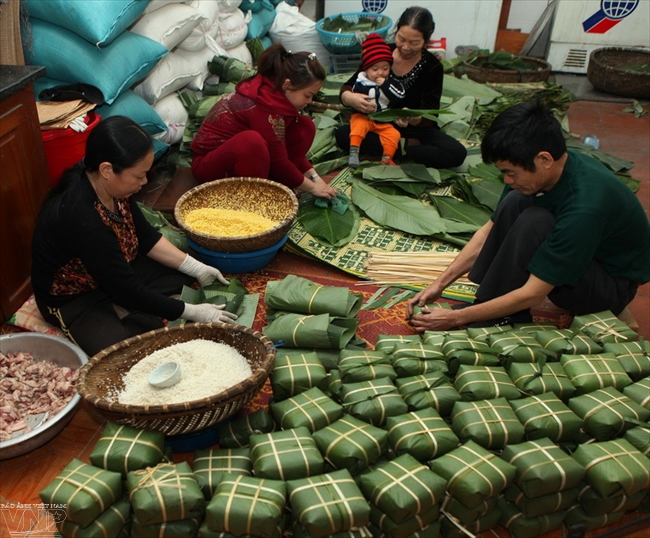 The village of Tranh Khuc which specialises in making Banh chung (square sticky rice cake) becomes busy during the days before Tet. Photo: Trinh Bo/VNP 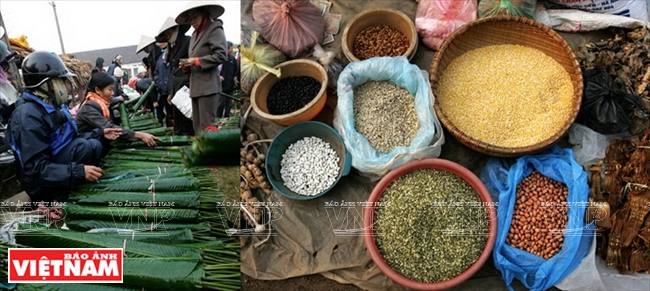 La dong, sticky rice, green beans, dried bamboo sprouts and mushrooms are sold at a year-end mountain market. Photo: Trong Chinh/VNP 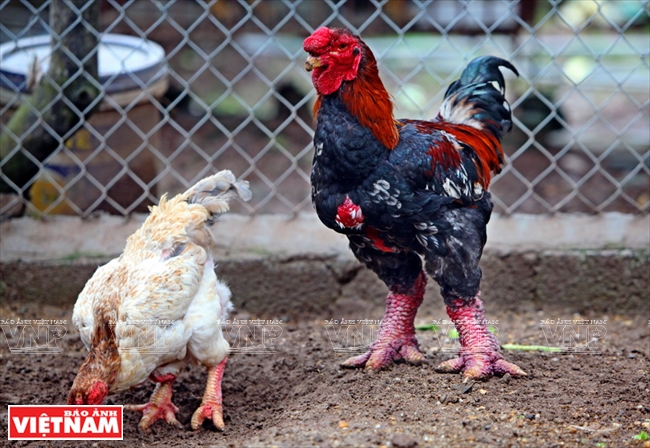 Dong Tao chicken in Khoai Chau district, Hung Yen province is a specialty for Tet. Photo: Cong Dat/VNP  Traditional cakes and jams of Vietnamese people. Photo: Tra My & VNP’s file 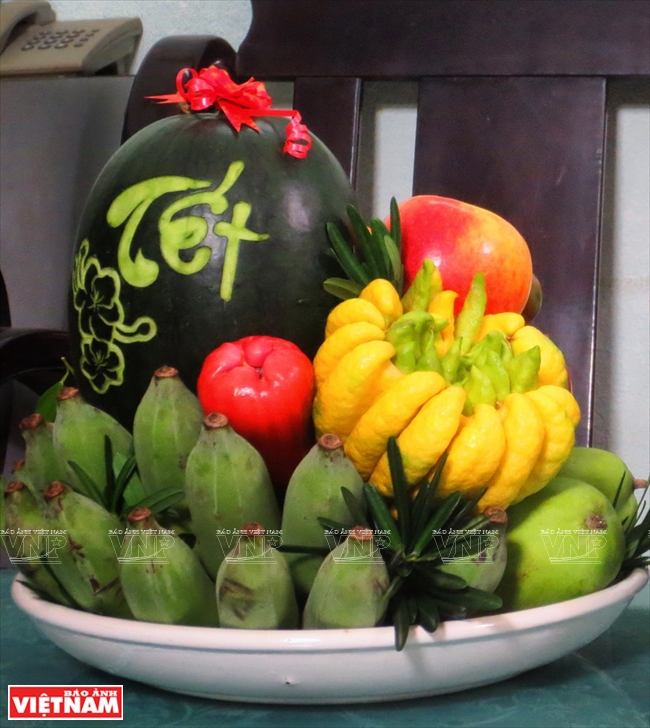 A five-fruit tray displayed on an altar on Tet. Photo: VNP’s file The colour of Banh tet la cam, a specialty of the people in the southern province of Can Tho on Tet. Photo: Nguyen Luan/VNP 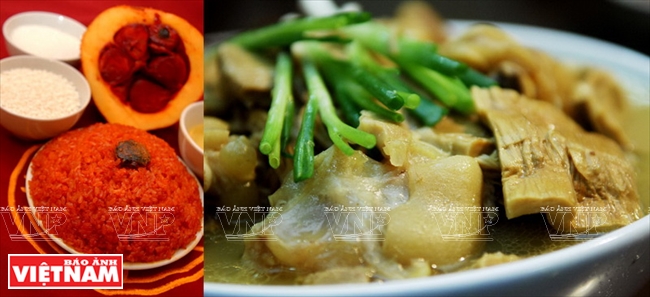 Steamed glutinous rice with Gac flesh and bamboo sprout soup are popular dishes of the Vietnamese on Tet. Photo: Tra My  Some specialties for Tet, such as Che con ong (sweet sticky rice), Che kho (sweet green lentil cake) and Che long nhan (dried longan in syrup). Photo: Tra My 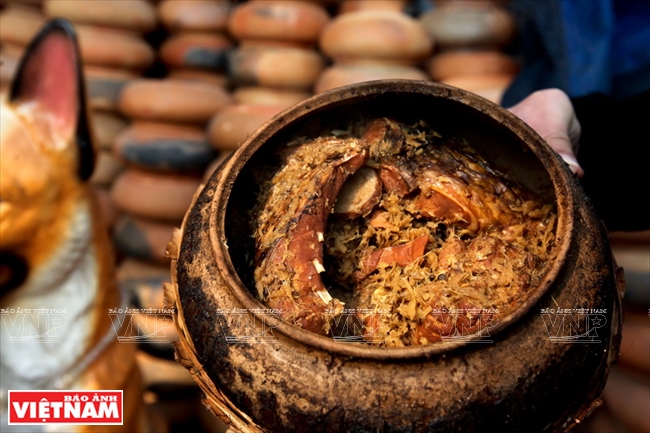 Dai Hoang braised fish in Ly Nhan, Ha Nam. Photo: Viet Cuong/VNP A traditional food tray for Tet of Vietnamese people. Photo: Tran Thanh Giang/VNP |
The Vietnamese people respect the moral philosophy, “When drinking water, you should think of the source”. During Tet, they often present one another with delicious food, fruits and vegetables, cakes and candies. Young people give older ones gifts to show their respect and gratitude. For example students give their teachers chicken, sons and daughters present their parents with new clothes or nice cloth; close friends exchange paintings or a pair of parallel sentences to show their close friendship.
The Vietnamese people enjoy Tet materially and spiritually. From big cities to small towns, in urban or rural areas, images of Tet are seen and the streets and shops are very busy. During Tet, people visit one another, entertaining with food and drinks, and greeting each other with wishes for luck and happiness. The atmosphere is so joyful and full of relaxation. This cultural custom reflects the Vietnamese people’s long-standing, durable relationship not only inside their families, but also in their native places and localities nationwide.
Story: Thong Thien Photos: Vietnam Pictorial

